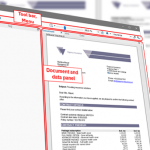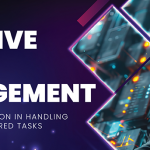No Application is An Island
COVID-19 has been the greatest trigger for change in our lifetime, forcing many to rethink, reshape their business systems, and seek the way out of the status quo. Holding back change exposes organizations to existential risks, and puts pressure on companies to mobilize their resources and act faster than ever before.
It is really hard to join any meeting right now and not talk about how important technology is to meet strategic objectives of faster digitalization and reducing costs. To drive true change, organizations need to digitize at scale, but many of them struggle to deliver on requirements– the main reason being integration challenges with existing applications and infrastructure.
Virtually all agree that what they would need now is some kind of a Lego approach – a modular application architecture with components they could piece together and assemble, disassemble, and recompose solutions to react to unexpected events with greater speed and agility.
In reality things look of course quite different. Many of the data and functions required by digitalization initiatives still reside in traditional solutions that isolate application data and processes or tie them up in monolithic applications. Having been designed to deliver core capabilities to certain business areas, these applications cannot be ripped and replaced, and also not easily decomposed, resulting in limited ability of organizations to adapt.
For us, as an enterprise communication hub vendor, the modular approach has proven to be just right. It is easy to start ‘where the shoe hurts most’ and assemble vetted software components into customer solutions that can be re-configured, adapted and extended to grow and change as the needs change.
But they still need to integrate. The communication always comes on top of everything that an organization has, and if you think of 10, 15 or 20 years of software – most of it is still there.
Storage systems, databases, industry-standard applications, mainframe and home-grown applications, data warehouses and email, voice, chat, Social Media and new Marketing and Sales applications, and more – they all need to be accessed and served.
Depending on their age and type, some of these applications have application-specific interfaces and some are interfacing via newer standards, such as CMIS, REST or SOAP; you must also integrate on the user interface level for clients and employees to use portal, web and mobile, and sometimes you may be dealing with devices or with older systems that need to be integrated via queues or database tables or you need to fall back to the file interface.
So, how do you bring it all to work together?
Here again the modular approach comes into play. With a collection of integration modules grounded in the service-oriented architecture, you can do whatever you need to do – if you want to access the storage, you have the service for that, if you want to start a certain process or you want to integrate certain device, you will use another service – for each and every thing you can quickly configure one of the integration modules and connect.
The modular approach solves a number of problems with a single stroke – it shortens the time to deliver new solutions, it helps protect investments and it introduces flexibility and adaptability to make the business more resilient to disruption in the future.
Please read more on the future of the application architecture and the Gartner’s formalized approach with the ‘Gartner Reference Model for Composable Enterprise Applications.’
If you want to learn more on this topic, please feel free to contact us. We look forward to talking to you!
Senior Manager Brand Marketing
Vienna, Austria






